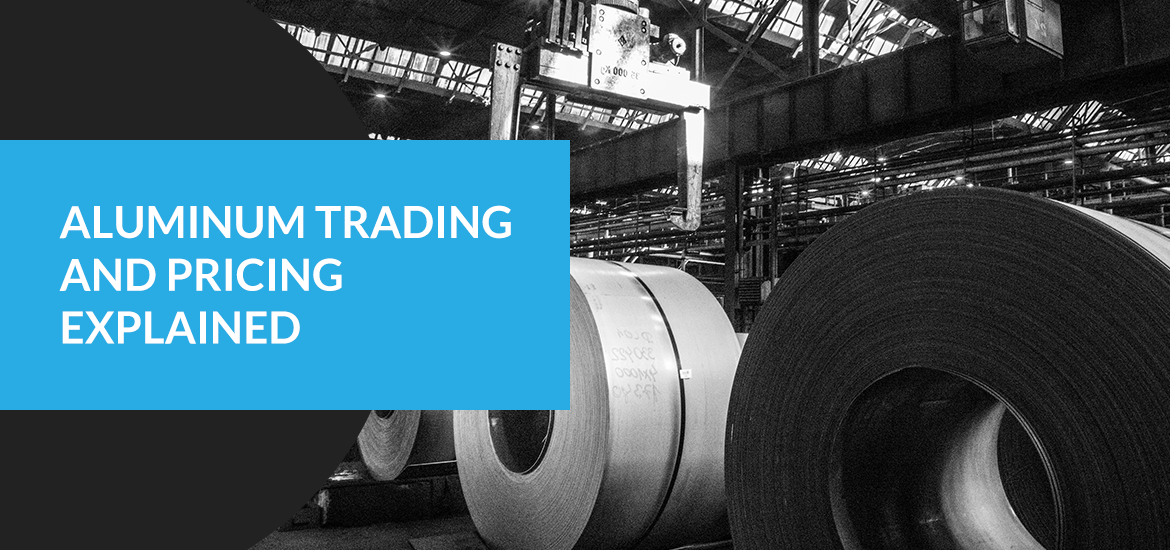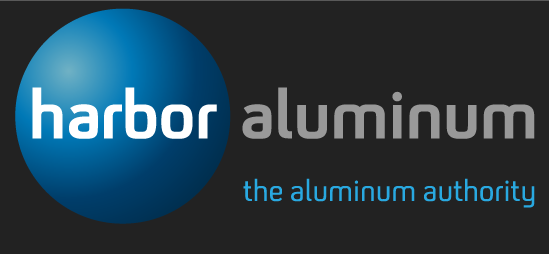Aluminum Trading and Pricing Explained

Aluminum is the most-produced nonferrous metal in the world, and it's been a tradeable commodity for decades. Many industries use the metal, from aviation to food and beverage to automotive, creating a high demand for it. Many factors influence aluminum pricing. Understanding their impact and knowing where and how you can trade aluminum are key to navigating the market successfully.
What Affects the Price of Aluminum?
The price of aluminum, like any commodity, varies by the day. The following factors can affect aluminum prices.
1. The Electricity Cost of Producing Aluminum
The Aluminum Association finds that electricity contributes to more than a third of the price of aluminum production. The process of creating aluminum demands electricity to turn bauxite into aluminum. Electricity pricing varies based on supply and demand, and when electricity demand rises, pricing will go up. The world's top aluminum producers have no choice but to rely on electricity, though some have explored alternatives like hydropower. Still, any substantive move to hydropower remains far off in the future.
2. Production Openings, Strikes or Closures
Supply is a significant factor in the pricing of aluminum, and one element that influences supply is how smoothly things run at the mines and mills that make the aluminum. If a bauxite mine experiences a strike or an aluminum mill shuts down due to a health issue, that reduces the amount of aluminum available. Similarly, if a mine or mill faces trouble filling job openings, production may decrease.
Production issues can lead to increased pricing for aluminum because the demand remains the same while the supply goes down. Keeping an eye on labor issues can alert you to pricing changes on the horizon.
3. Industry-Specific Trades
Technology innovations and differing demands across industries can influence the pricing of aluminum as well. If sectors heavily reliant on aluminum experience innovations or changes, that can increase demand for aluminum. Production adjustments and the growth of green energy, for instance, both lead to higher demand and pricing.
4. Globalization
The lion's share of global aluminum production occurs in Australia, Brazil and China, so these countries have an outsized influence on availability.
5. International Trade
Government policies and regulations, which can change with new administrations and changing motivations, are also cost drivers of aluminum.
Where Is Aluminum Traded?
Three main markets trade aluminum:
London Metal Exchange (LME)
The nonferrous exchange, which excludes steel and iron, trades in metals futures and options for metals including aluminum, cobalt, zinc and gold. It is considered the worldwide focus of industrial metals trading. It serves as Europe's lone physical commodities trading market, with many switching to electronic trading.
New York Mercantile Exchange (COMEX)
The platform previously called the Commodity Exchange, Inc., entered its current iteration when it merged with the New York Mercantile Exchange. It acts as an intermediary but doesn't supply metals. Trading encompasses gold, copper, silver and aluminum.
Shanghai Futures Exchange (SHFE)
The SHFE offers trading of nonferrous metals, including aluminum, zinc, tin and nickel. Between Shanghai, New York and London, traders can work every part of a 24-hour period to access futures contracts.
Ways to Trade Aluminum
There are four main ways to trade aluminum:
1. Aluminum Futures
Available on all the major trading platforms, futures exchanges involve a contractual obligation to take on a quantity of aluminum for a specific price. The amount may be in pounds or tons, and it is generally sold off when speculators think prices will decrease.
2. Aluminum ETFs
ETF stands for exchange-traded fund. ETFs offer exposure to aluminum futures while removing the need for a futures account. You can buy them on a stock exchange, and they securely track the price changes of aluminum.
3. Aluminum Shares
You can find aluminum shares for individual companies you want to invest in, similar to purchasing traditional stock. If you know the market, you may prefer following pricing and trading that focuses more narrowly.
4. Aluminum Options
Aluminum options allow holders to take a long or short position on futures at a certain price. The option expires after the markets close on a specified date. You can obtain options through the LME or COMEX, and you can receive quotes in tons. If you think the price of aluminum will decrease, you can invest in aluminum put options.
Choose HARBOR for Aluminum Industry Prices
Market forecasting and intelligence can help you navigate the complex issue of aluminum pricing. HARBOR Aluminum Intelligence's reports deliver pricing data points, industry outlooks and expert insights. We only focus on aluminum, and we have leading experts on our team with years of industry experience forecasting and consulting on aluminum pricing. Sign up today to receive daily alerts from the aluminum authority. Contact us for additional information.

